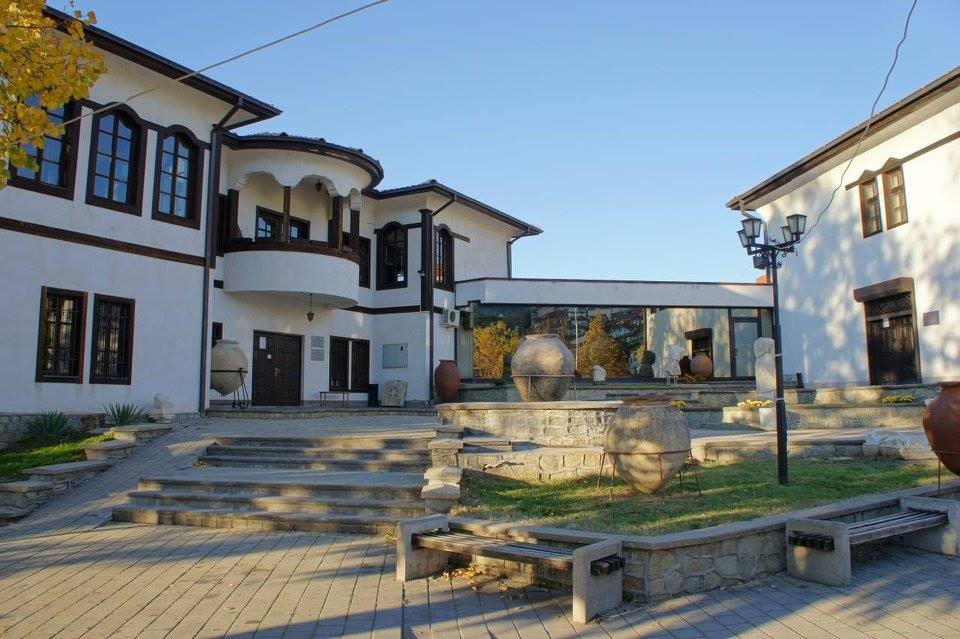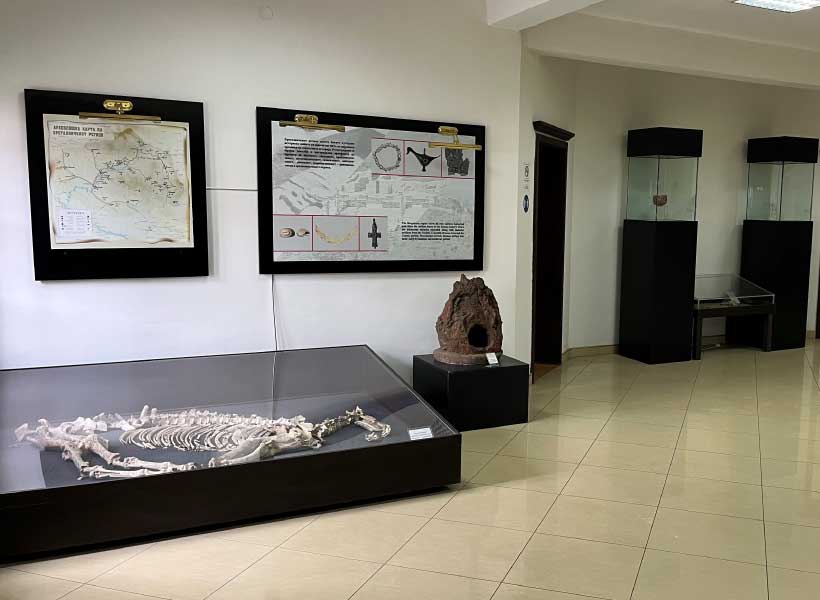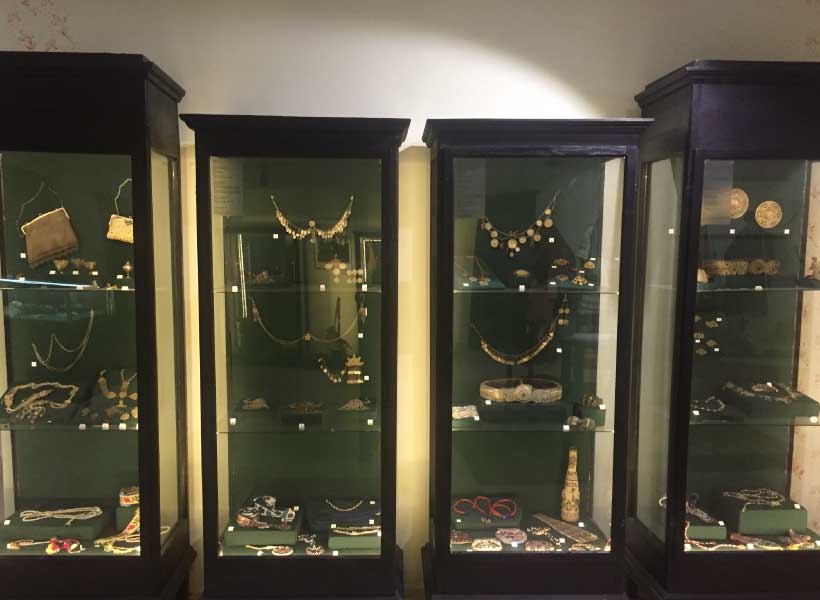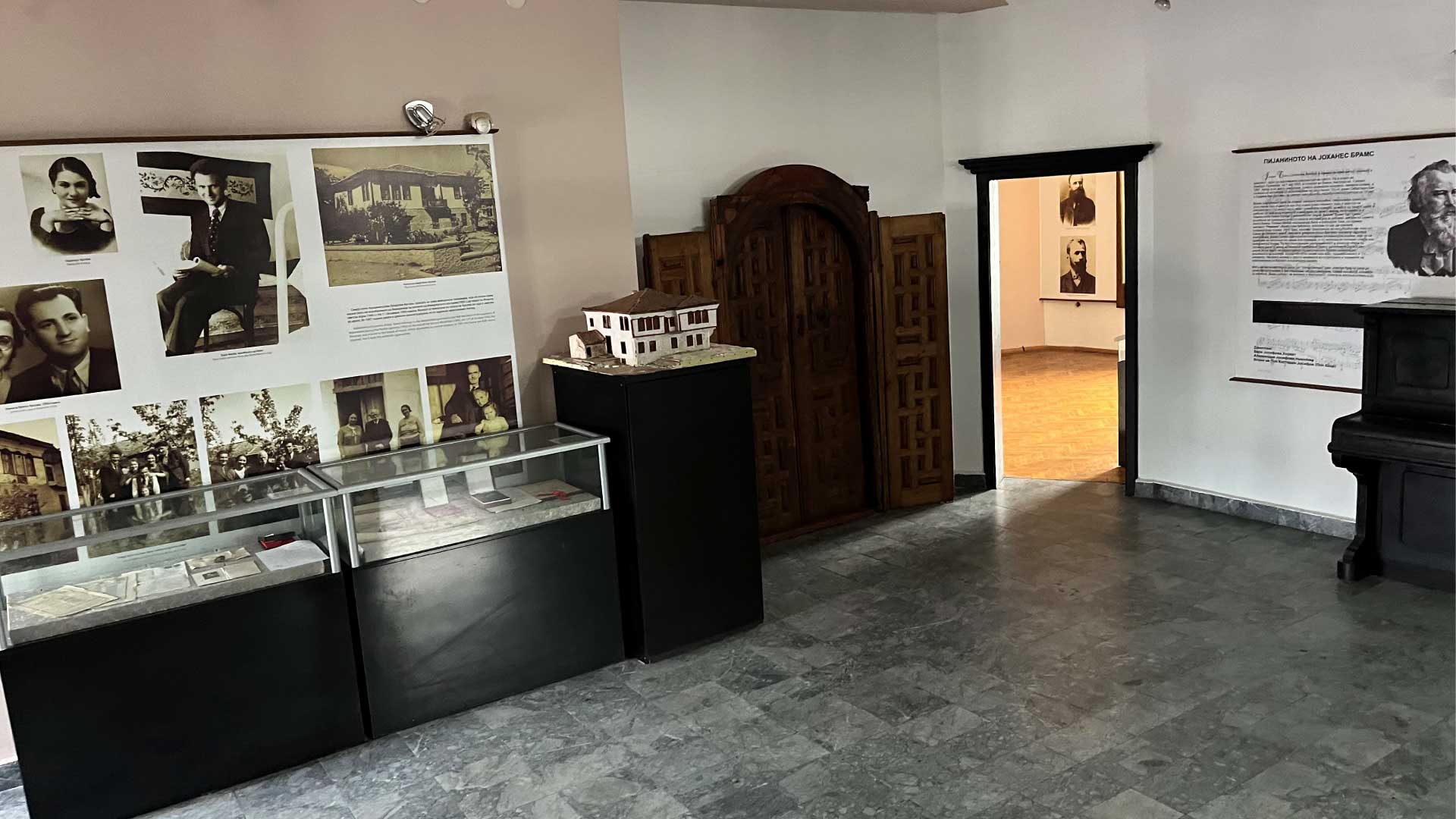The Institute for Protection of Monuments of Culture and Museum – Shtip is a cultural institution that conducts research, conservation, professional and scientific processing, protection, preservation, publication and presentation of immovable and movable cultural heritage. Additionally, the museum has an educational program that includes student visits, as well as individual and group visits, during which historical, archaeological, and ethnological cultural heritage is presented.
The museum in Shtip was established in 1950. The first museum exhibition was opened on October 11 of the same year in the Husa Medin-Pasha Mosque. Since 1985, the museum is located in the family house of Arsovi. Today, the museum complex consists of three buildings, one of which is administrative, while the other two house the museum exhibitions.


Within the framework of the NI Institute and Museum – Shtip, there are three permanent exhibitions from the fields of archaeology, history, and ethnology. The Archaeological Exhibition, located in the Anevi-Gočevi family house, was opened in 2005. The exhibition space, spread over two floors, contains a total of 1,326 exhibits: ceramics, jewellery, coins, flint tools, wooden carvings, and more. All the exhibits are chronologically dated from the early Neolithic to the medieval period and they originate from localities found along the Bregalnica River.
The Historical Exhibition, called "Shtip throughout history from the I-XX century", located on two floors in the family house of Arsovi, was opened in 2011. Historical events related to Shtip and its inhabitants from the earliest period of the first mention of the city of Shtip until the formation of independent Macedonia can be traced through the historical exhibition.
The exhibit showcases over 1,000 valuable items, including around 500 photographs and 37 showcases displaying weapons (ranging from the Ottoman period to World War II), documents (letters, report cards), banknotes and coins, stamps, football club crests, medals, orders, and plaques, among others.
The Ethnological Exhibition is part of the NI Institute and Museum - Shtip, opened in 2011 and remodeled in 2017. It contains over 400 items of textiles, jewelry, household items, wooden, ceramic and metal objects. The exhibition is physically divided into two parts, but the objects complement and interweave with each other, forming a whole. The objects represent the bygone times, traditions, way of life and customs, they speak to us about old crafts, the clothing and decorating fashion under the influence of oriental and Western European countries, both in urban and rural areas. It is a rich material and spiritual cultural heritage and an important part of the identity of the Macedonian people.


The Museum of the Macedonian Revolutionary Struggle for Shtip and the Shtip region 1893-1934 is part of the NI Institute and Museum - Shtip. The museum is located in the Shtip settlement of Novo Selo and is situated in a house with old town architecture, which belonged to the family Andonovi. This museum was opened in 2014 and it has an exhibition space of 160 square meters, seven separate rooms in which 12 wax figures of prominent members of the organization, valuable showpieces, photographs, weapons and more can be found. The museum exhibits ethnological objects from everyday life (household items) of people from the late XIX and early XX century.
Within the framework of the Institute and the Museum – Shtip, there is also the Art Gallery Bezisten, the Memorial House of the national hero Slavcho Stojmenski, the Late Antique site Bargala, the Husa Medin-Pasha mosque and the Monument to the Deported Jews. In addition, visitors find interesting the medieval fortress Isar, where the monument of the revolution and the archaeological site that housed the church of St. Vlasie are located, dating back to the XIV century, as well as the galleries of icons in the churches of the Dormition of the Mother of God and St. Nicholas Church. Address: 2 KEJ MARSHAL TITO, Shtip. Social media profile: https://www.facebook.com/NIMUSEUMSTIP/.

